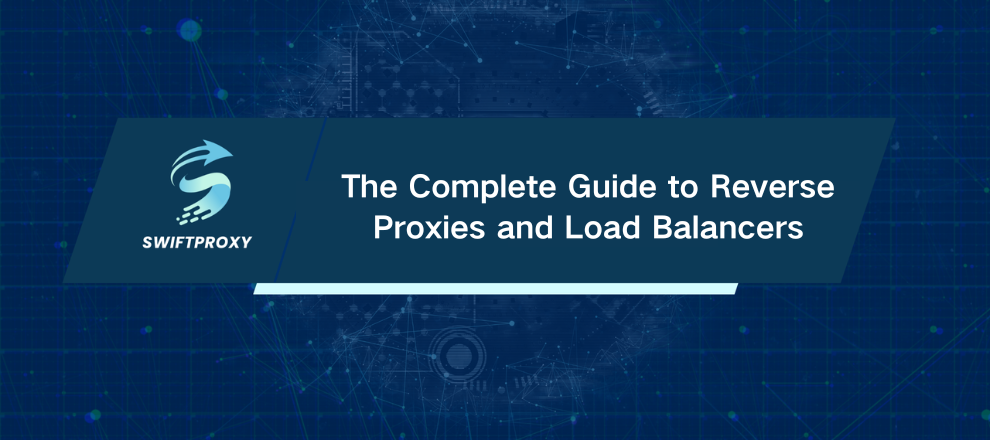The Complete Guide to Reverse Proxies and Load Balancers
Many reverse proxies handle heavy traffic without burning extra resources, while load balancers efficiently distribute traffic to prevent server overload. Both tools allow IT teams to scale with agility. The difference? Load balancers focus on distributing traffic, ensuring smooth performance. Reverse proxies act as gatekeepers, improving access speed, security, and reliability. Let’s unpack both so you can make smarter, high-performance decisions.

Understanding the Fundamentals
Understanding Reverse Proxy
A reverse proxy sits between clients and backend servers. When a client requests an application, the reverse proxy intercepts the request, decides which server should handle it, and forwards it. This approach does several things at once: it reduces software load by caching responses, optimizes data flow, and shields internal servers from direct exposure.
Think of it as a traffic conductor for your network. Requests are routed efficiently, security is enhanced, and system stability improves. Unlike a forwarding proxy, which protects clients from external threats, a reverse proxy protects the servers, making your infrastructure more reliable and resilient.
Understanding Load Balancer
A load balancer is the ultimate traffic manager. Its main job? Keep servers running smoothly under fluctuating demand. It distributes incoming requests across multiple servers, preventing any single node from becoming a bottleneck. Requests can be routed based on criteria such as server health, current load, or even IP address.
The magic happens in real time: when traffic spikes, the load balancer quickly adjusts the flow, keeping services available and performant. Developers don't have to manually restrict apps or juggle resources. The system adapts, providing high uptime and minimal delays. For e-commerce platforms or large databases, these milliseconds make a huge difference.
How They Work in Practice
Reverse Proxy Mechanics
Imagine dozens of clients requesting the same content simultaneously. A reverse proxy decides which internal server handles each request. It caches popular responses to save bandwidth, reduces processing strain, and keeps operations smooth even during failures. If a node crashes, others pick up the slack seamlessly.
By concealing internal service settings, the reverse proxy also improves security, lowers attack exposure, and allows administrators to scale without constantly reconfiguring servers. Users experience uninterrupted access—while the backend remains invisible and protected.
Load Balancer Operation
A load balancer monitors server health and spreads requests to maintain balance. It dynamically measures performance metrics, redirects traffic to underused nodes, and keeps the system flowing without overloading any single resource.
Algorithms such as round-robin, least-connections, and IP-hash determine routing strategies. Round-robin distributes requests evenly, least-connections favors servers with fewer active sessions, and IP-hash ensures session persistence. Choosing the right algorithm depends on traffic patterns and latency requirements, optimizing resource use and keeping services dependable.
Types and Variants
Types of Reverse Proxy
Reverse proxies come in different forms. Some allow direct client engagement, while others reroute requests to optimize network traffic. Caching proxies store frequently requested content to reduce processing loads. SSL-terminating proxies offload encryption work from backend servers. Web accelerators compress data and speed up delivery.
These strategies increase accessibility, enable seamless scaling, and ensure performance remains stable—even when traffic spikes or a server goes offline. Large-scale web platforms benefit most, gaining resilience without manual configuration.
Types of Load Balancer
Load balancers can operate at the network or application level. Programmatic load balancers adapt automatically, while gateway systems combine reverse proxy functions with load balancing for maximum efficiency. Some analyze application-level data to route traffic intelligently, while others focus purely on distributing connection load.
This flexibility ensures that during peak demand, traffic is handled efficiently, internal resources aren't overwhelmed, and users experience minimal latency. Infrastructure stays secure, scalable, and ready for growth.
When to Choose Each
Reverse Proxy Use Cases
Use a reverse proxy when you want to protect internal servers, reduce load, and speed up content delivery. They excel at caching, SSL termination, and load management for individual servers. Node failures don't disrupt service, and administrators can maintain systems without downtime.
If your platform serves multiple services or APIs, reverse proxies provide a unified entry point while maintaining security and stability. Adding legitimate IP headers improves protection against attacks, and intelligent routing ensures performance remains consistent.
Load Balancer Use Cases
Load balancers shine when you need to handle thousands of simultaneous requests. By distributing traffic across multiple servers, they prevent bottlenecks, enhance responsiveness, and improve system reliability.
They're essential for high-availability services that operate 24/7, detect malicious traffic early, and scale dynamically. From mid-size platforms to global applications, load balancers keep services online while optimizing resource use and maintaining performance.
Key Differences in a Nutshell
While reverse proxies and load balancers share overlapping features, their goals diverge. A load balancer primarily focuses on distributing traffic dynamically, ensuring consistent performance and preventing server overload. A reverse proxy acts as an intermediary, caching content, terminating SSL, and shielding internal servers.
Together, they create a resilient, high-performance network: the reverse proxy secures and accelerates access, while the load balancer keeps workloads balanced, seamless, and efficient. Combined, these tools save time, reduce downtime, and deliver superior user experiences.
Final Thoughts
Reverse proxies and load balancers aren't interchangeable—but they are complementary. Understanding their nuances allows IT teams to design networks that are scalable, secure, and highly performant. When traffic surges, multiple servers absorb the load. When threats appear, proxies hide vulnerabilities. Algorithms adapt dynamically.

















































